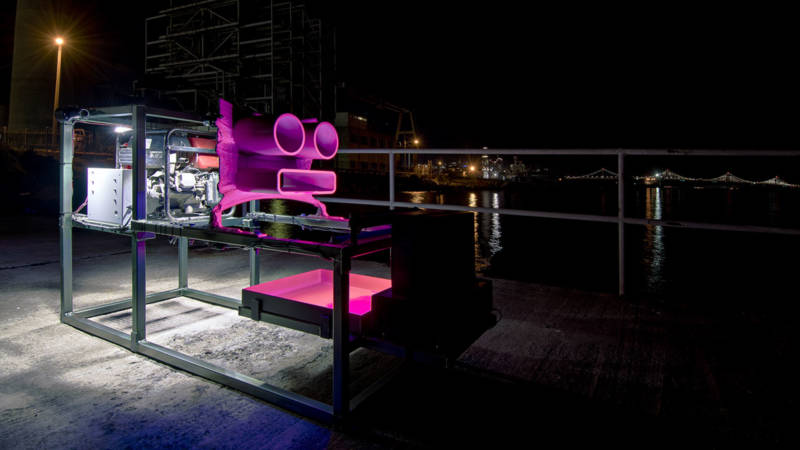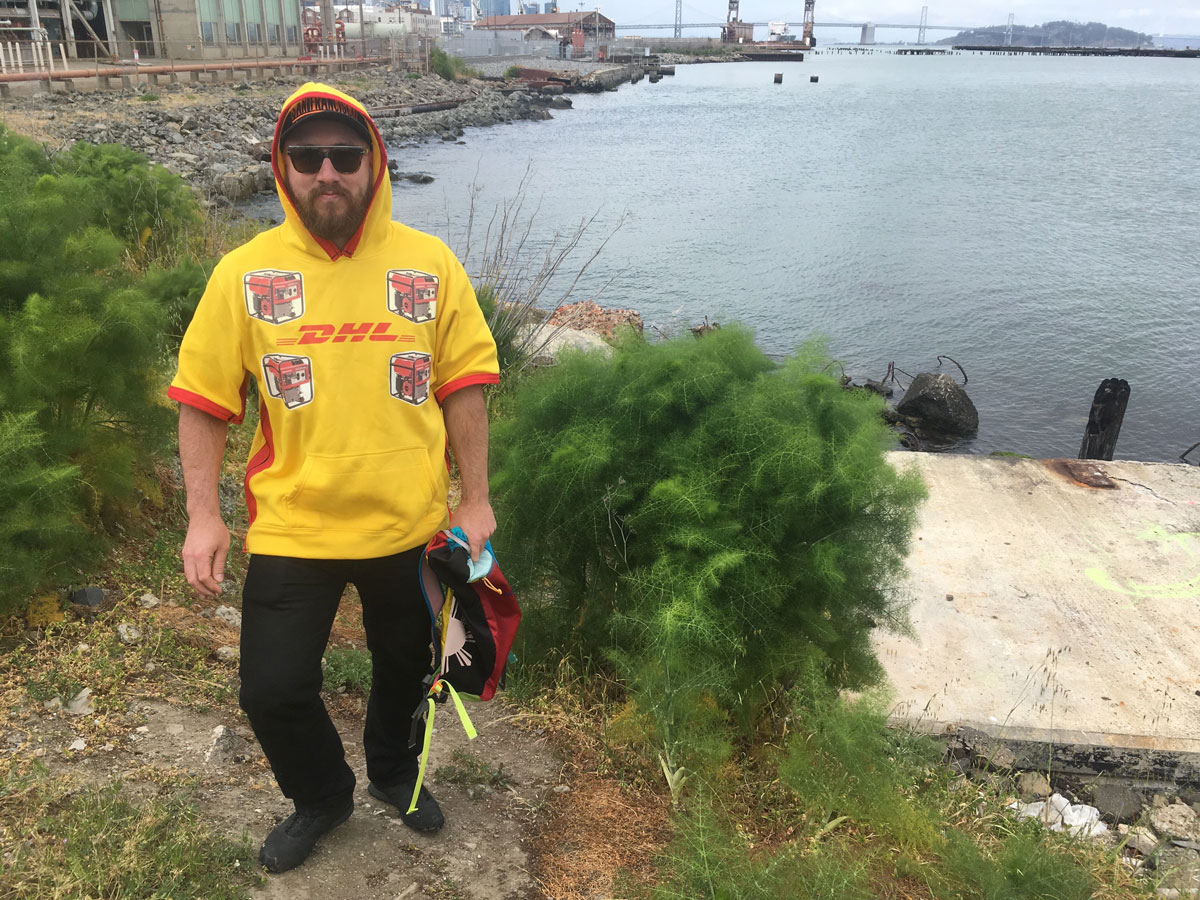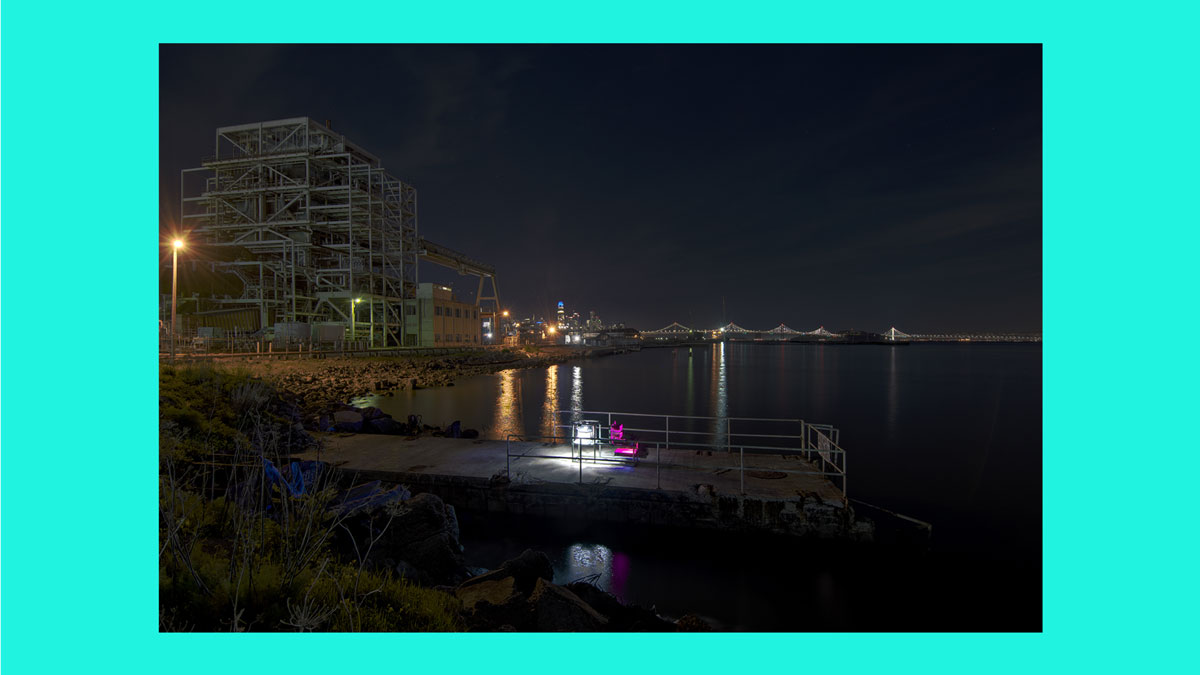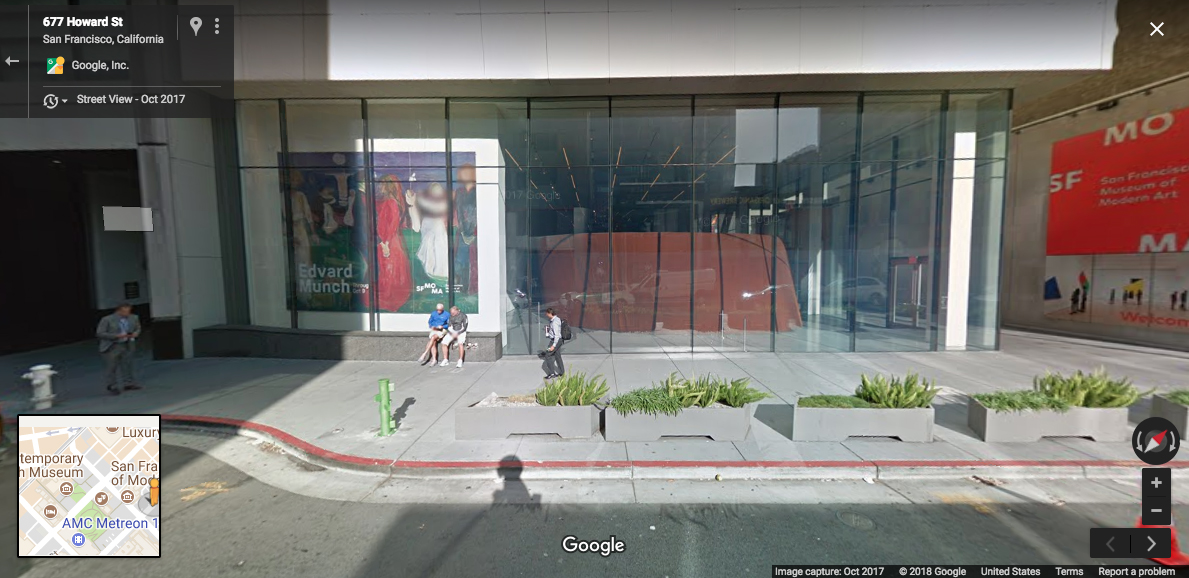Biking to meet Charlie Leese at the watery edge of San Francisco’s Dogpatch neighborhood, 23rd Street starts to look less like a thoroughfare and more like a parking lot for trucks. It’s not the most welcoming environment—and it certainly doesn’t declare itself very loudly for what it actually is: a passageway to a publicly accessible part of the San Francisco Bay. (At the end of 23rd, Leese points to a little blue-toned sign that reads “public shore,” but it’s hidden behind a chain link fence, dwarfed by nearby “authorized vehicles only” and “no trespassing” signs.)
With a little luck and a sharp eye—or in my case, some directional assistance from Leese—a painted path leads from that dinky sign to a sandy walkway along the south side of a DHL shipping warehouse. At its end: a weedy plot of land and a breathtakingly expansive view of the Bay.
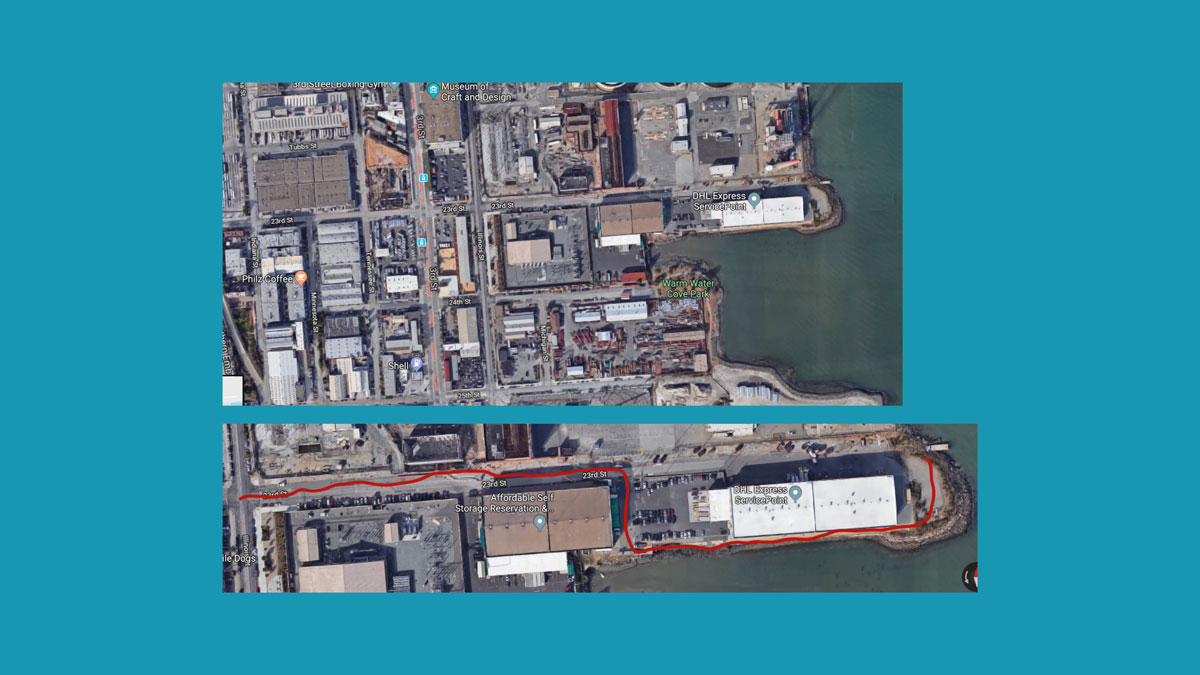
On Friday, May 25, between 6:45 and 9pm, Leese is inviting people to this hard-to-find spot for a one-night-only public event, a presentation of his site-specific sculpture called coiling the power lines of supine stagnation. The piece’s hefty framework supports a gas-powered generator, lights, an amp, speakers and a mask-like structure made from thick-walled steel, rebar and beads of molten metal. It looks like a scaled-down version of the industrial infrastructure that surrounds it, its growling motor an echo of the trucks moving in and out of the adjacent global shipping hub.
Leese, co-founder of Bayview’s Hunt Projects (a combination of a wood/metal shop and artists’ studios) and Cloaca Projects (an exhibition space in the shop’s backyard shed) is interested in thresholds. “I like this negotiation between past industrial use and the Bay taking back over,” Leese says.
He found the spot for c.p.l.s.s., which seems to have the name “Power Plant Shoreline Access” on a Port of San Francisco map, while wandering around the Bay-adjacent parts of the Potrero and Bayview neighborhoods.
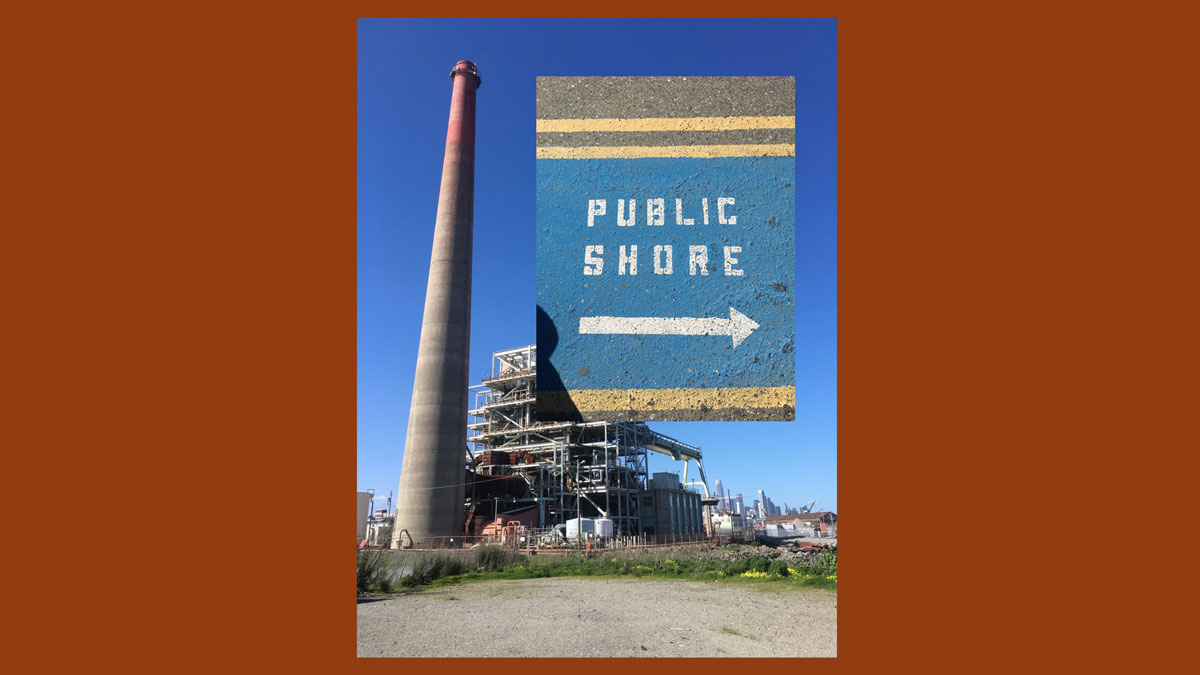
Leese will activate c.p.l.s.s. on what he describes as “a decrepit concrete slab” that extends into the water from the raggedy coastline. Just north of the DHL warehouse is the decommissioned Potrero Generating Station (the last fossil-fuel–burning power plant in San Francisco). To its south: Warm Water Cove Park, a more officially maintained piece of public shore once known as Toxic Beach.
